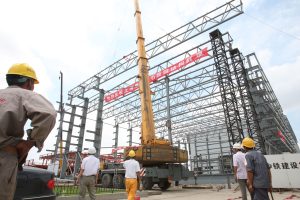China’s real estate market is in a slump, kicked off last year by Evergrande’s debt default. Overindebted developers have been reined in through the Three Red Lines policy, which has tightened leverage requirements. Other property developers, including Shimao and Sunac China Holdings, have also missed debt repayment deadlines. This sudden decline in the real estate sector lies in stark contrast to the heady times experienced in previous years, when officials constantly warned consumers not to speculate in this market. Now, overindebtedness due to mixed incentives for development is threatening to take down major real estate firms.
As one of a few destinations for household savings, China’s property market has expanded since the late 1990s, witnessing few corrections. Housing prices have risen, especially in large, Tier 1 cities like Beijing and Shanghai. Due to the presence of collateral, both developers and home buyers have been able to secure loans to support investment in the sector. As a result, about 27 percent of bank loans in China are related to property. Property developers continued to build in order to meet seemingly endless demand, but in order to do this, they had to take on debt to bridge the gap between construction and sales.
In addition to bank loans, developers took on debt in the form of onshore and offshore bonds, trust loans, and wealth management products. Lenders thus range from institutions to the public both at home and abroad. Developers also engaged in joint ventures to invest in projects while obscuring their debt. Joint ventures have allowed property companies to keep debt off balance sheet.
In order to shore up the sector, regulators recently reduced the loan market quoted rate (LPR). In addition, local governments have been advised to implement their own real estate policies according to their needs. For example, some local governments, such as Shanghai, have reduced purchase restrictions on homebuyers. Both Tier 1 cities, such as Beijing and Shanghai, and Tier 2 cities, such as Suzhou and Zhengzhou, have lowered mortgage rates. Such local government policies have frequently been used to boost or dampen real estate activity.
Although these measures will ease some major indicators, such as property sales and prices, the rules do not necessarily resolve the issues faced by overindebted developers. Many are struggling to repay their debts amid COVID-19 lockdowns and dwindling demand. The measures also fail to address the underlying issues behind excessive property development. Local governments and the public have depended on the real estate sector to provide a source of income and/or investment, spurring on property construction. For years, the government has allowed prices to rise, preventing major corrections in order to prevent social disorder. Indeed, construction has contributed to national GDP when other sources of production have struggled to keep up.
China’s crackdown on property debt can be viewed in the context of the country’s struggle to rein in corporate debt. In 2016 and 2017, officials cracked down on corporate debt, much of which was held by state-owned enterprises (SOEs). These firms had taken on large amounts of debt in order to help carry out government policies to stimulate the economy in the wake of the global financial crisis and slowing global growth. SOE margins were pushed higher, while the source of overindebtedness, implicit government guarantees of SOE debt, remained unaddressed.
The property debt crackdown is similar, attacking developers’ leverage indicators rather than the underlying problem of overreliance on construction as a failsafe to economic downturns, and as a primary investment outlet. Preventing downturns early on helped to support excessive investment in this sector and contributed to the massive asset price bubble that plagues the industry.
Authorities need to address the reasons behind excessive debt buildup in the property sector rather than the symptoms alone. Allowing property price declines, reducing reliance on property construction as a source of GDP, and creating other investment outlets can help. In addition, in the long run, a much-anticipated property tax may help to better control speculative behavior in the housing market. While this alone may not resolve all of the issues, it can help to provide local governments with consistent revenue (rather than relying on land sales associated with new construction) and reduce buying fervor in overheated areas.
China has been trying to generate new sources of GDP, especially in new technologies sectors, but also requires continued reform in many industries to increase competition and boost the private sector. This could help bolster growth without overreliance on the real estate industry.

































